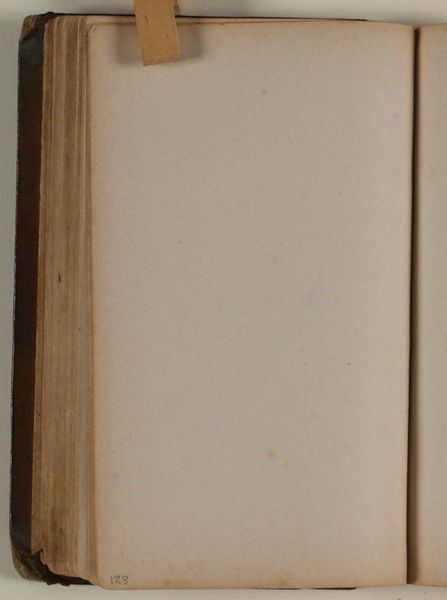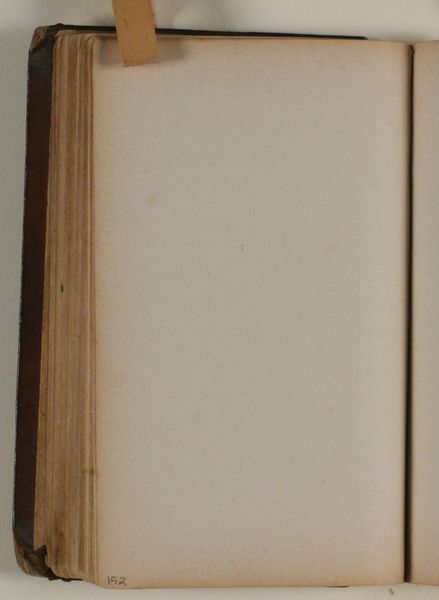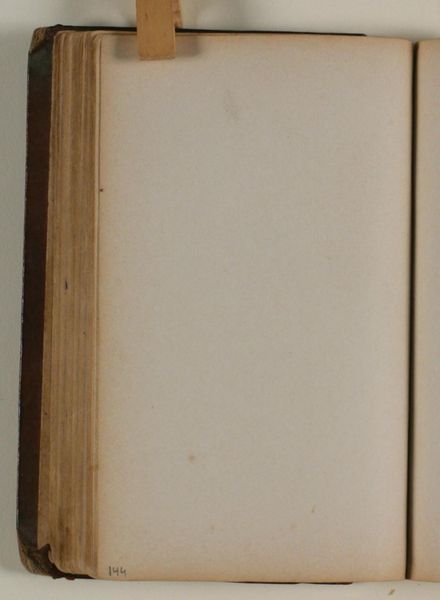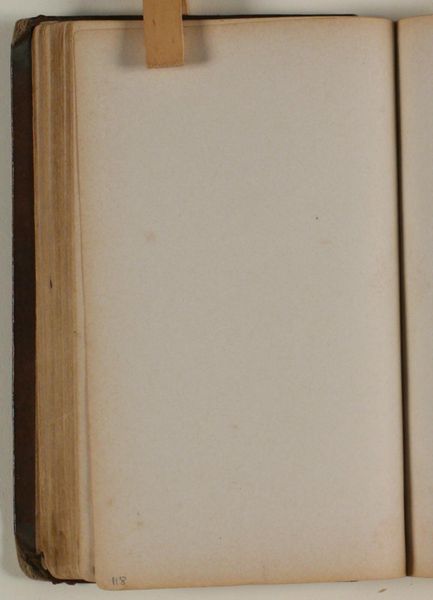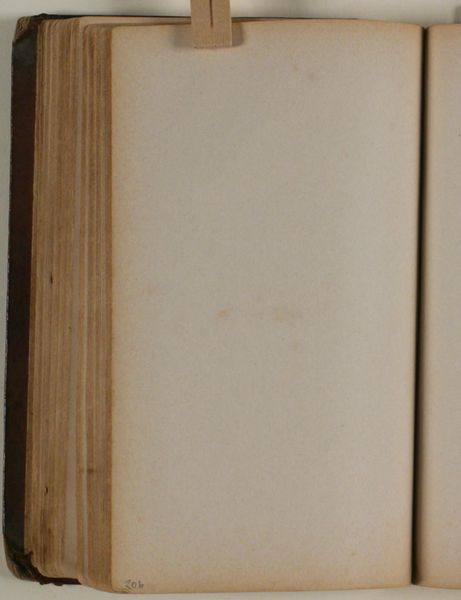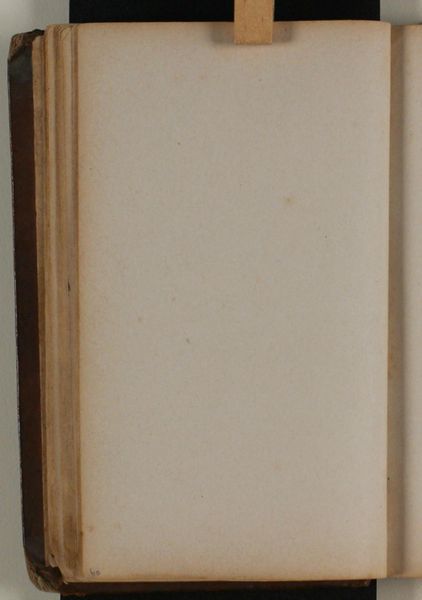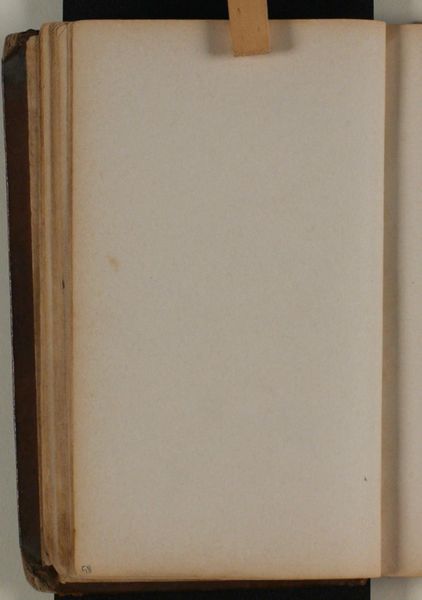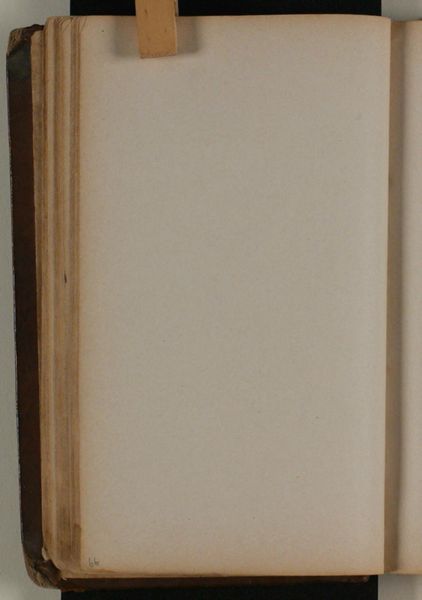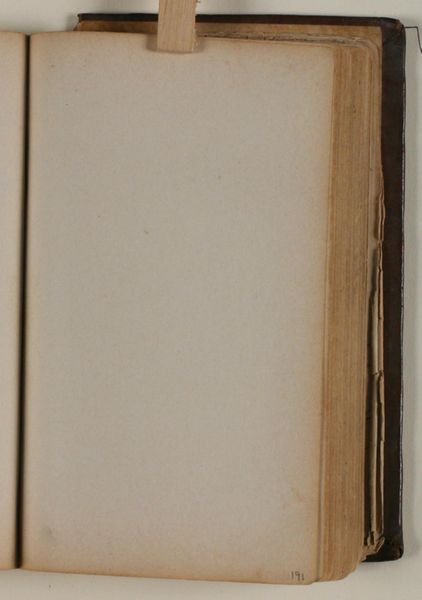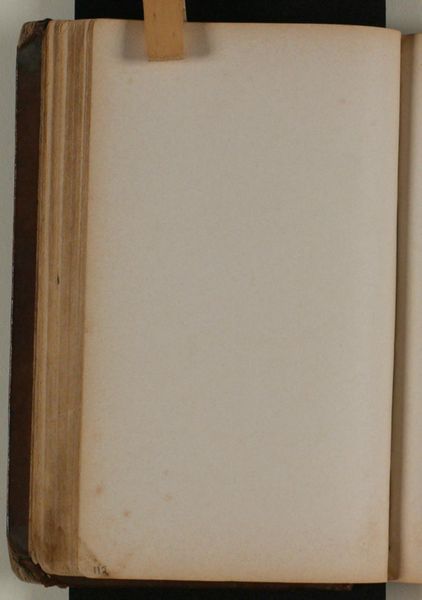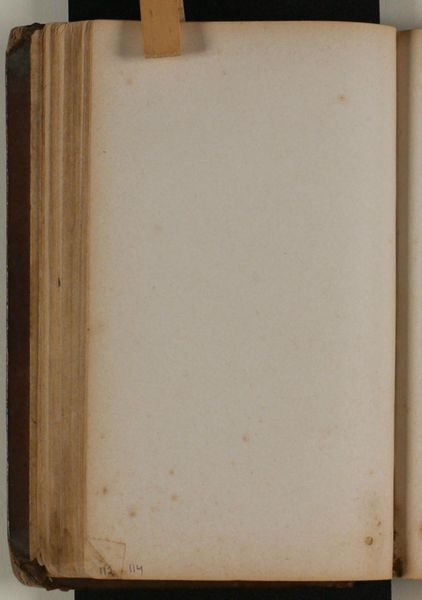
drawing, coloured-pencil, paper
#
drawing
#
coloured-pencil
#
paper
#
coloured pencil
Curator: The piece we are looking at today is called "Blank", a coloured pencil drawing on paper, made sometime between 1864 and 1941 by Niels Larsen Stevns. It resides here at the SMK, Statens Museum for Kunst. What strikes you first about it? Editor: Well, initially, I'm drawn to the texture – the way the light catches on the aged paper. There's a palpable sense of quietude, a suggestion of untold stories within those blank pages. A symbolic space for reflection, perhaps. Curator: Indeed. Consider the political implications. Who historically had the privilege to leave pages blank, to control narratives, to have their stories told while others were erased? A blank page signifies both possibility and censorship. Editor: It also holds an incredible amount of potential energy. Blankness, in many symbolic systems, can represent the void, the potential for creation. We see similar symbolism in Zen Buddhism and even in various creation myths – the initial emptiness before form takes shape. Curator: That’s an interesting point. Think about who creates the form and what power dynamics are at play there. Who gets to fill this blank page? Which voices are privileged, and which are suppressed or ignored in favour of an easily accessed cultural inheritance? Editor: Precisely. Even the physical condition of the book suggests something. The browned edges and worn binding whisper stories of use and time, hinting at the complex dance between remembering and forgetting that underlies all cultural narratives. What do we choose to preserve, and what do we discard? Curator: And let us consider this "discarding". As activists and agitators we ask who decides what knowledge is valuable and, as such, worthy of being preserved? "Blank" asks us about the insidious operation of forgetting and its effect on the lives of people in society. Editor: Absolutely. Thinking about it now, “Blank” truly underscores the power of the unwritten. It embodies potential but, above all else, silence. I wonder if Stevns saw the artwork itself as space for new meanings, an area ready to be written into being? Curator: It really causes us to challenge the very structures that produce and value some kinds of knowing but not others, right? Editor: Indeed, a testament to what remains unspoken or even unrecognised in cultural histories. It causes us to consider not only the present moment, but what legacies have come before, allowing our very experience of viewing art to exist at all.
Comments
No comments
Be the first to comment and join the conversation on the ultimate creative platform.
